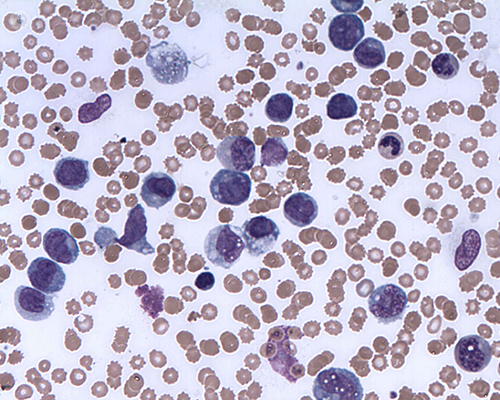The types of leukaemia, survival rate and outlook
Autore:Leukaemia is a type of cancer that starts in the blood-forming cells in the bone marrow with an excess of white cell production. Normal white cells are supposed to help the immune system, whereas the abnormal production of the white cells is not functionally good.
Hence, they lead on to symptoms like excess infection and other symptom complex related to leukaemia. So, it is almost like an overproduction of white cells, which shouldn't be happening with very mature types of cells circulating in the blood.

What are normal blood cells and what do they do?
Normal blood cells are produced inside the bone marrow. They come from common stem cells, which produces various different blood cells including red blood cells, white blood cells, and platelets. The red blood cells are produced mainly to carry the oxygen levels in the blood. And it is the main symptom which causes towards tiredness.
The white blood cells are mainly to fight infections. And they consist mainly of two different types: granulocytes, which constitutes predominant part of the white cells, and they are the main fighting power towards infection. If you don't have enough white cells, you're at a high risk of infection.
Similarly, the lymphocytes are a different way of fighting infections. They have two different types: T lymphocytes and B lymphocytes. The B lymphocytes produce antibody and they fight infections, and the T lymphocytes are like memory cells. Right from the birth, the baby's having vaccinations and they are all stored in those memory cells over the lifetime. So, it is a very important type of cell.
And platelets are the third type of cells. which produce mainly to help bleeding stop. They are produced from cells called megakaryocytes. And it is very important to have these cells to prevent bleeding.
What are the symptoms of leukaemia?
Symptoms of leukaemia can be quite vague which depends on the types of blood cells affected. The most common feature is related to red blood cells (anaemia), which can cause severe fatigue, malaise, and tiredness. The white cells involvement can lead on to increase risk of infections.
Predominantly chest infections, water infections, skin infections which can be the main presentation.
Whereas, involving the platelets, it's mainly bleeding manifestations including nosebleeds, gum bleeds, and excessive periods in females which can be the main presentation. It can cause bone pain, which is more common with the acute lymphoblastic leukaemia and also increased spleen and liver size, which can again cause abdominal pain. Excessive bruising can be another feature of acute leukaemia.
What are the different types?
The leukaemia can be divided into acute leukemias and chronic leukemias.
The acute leukaemias, again, is classified as acute myeloid leukaemia and acute lymphoblastic leukaemia. The acute myeloid leukaemia is a common presentation in adult leukaemia, whereas acute lymphoblastic leukaemia is more common in children.
Chronic leukaemias can again be sub-classified in the chronic myeloid leukaemia, which is less common and chronic lymphatic leukaemia and is much more common in the Caucasian population.
How is leukaemia treated?
The treatment of leukemias have evolved over the last few decades. The acute leukaemias, mainly the acute myeloid leukaemia and acute lymphoblastic leukaemia, is predominantly still treated with chemotherapy. Chemotherapy is mostly combined with immunotherapy and is also part of clinical trials. And there is also a major contribution by the stem cell transplantation which has made the treatment very effective in this group.
When it comes to chronic leukaemias, it is mainly a field of targeted treatment. In chronic myeloid leukaemia, the tyrosine kinase inhibition has been a very successful story and has almost replaced the previous option of stem cell transplantation. In chronic lymphatic leukaemia, there may be a proportion of patients who may not need any treatment and to watch and wait. When they do need treatment, there are various treatment options targeting various molecules and cell membrane receptors like Bruton tyrosine kinase, PI3 kinase, and BCL-2 inhibition, which has made the CLL treatment extremely effective and has got good 'leukaemia kill'.
What's the outlook of life with leukaemia?
The general outlook for acute leukaemias is improving. Especially acute myeloid leukaemia and acute lymphoblastic leukaemia, with chemotherapy, immunotherapy, and stem cell transplantation. This has made massive progress and people are getting cured. However, the elderly population is still a challenge. With various new modalities of treatment, it's very promising. Chronic myeloid leukaemia has a much more fruitful story, as it has almost made a huge impact by the targeted treatments. They are almost having a good quality of life and longer survival with the new modalities of treatment, especially chronic myeloid leukaemia and chronic lymphatic leukaemia. This has made an increased lifespan as well as good quality of life.
Book now with a specialist if you are experiencing any of the symptoms or have any concerns.


